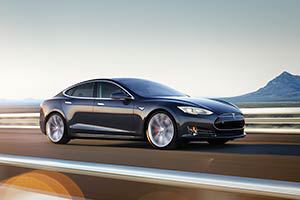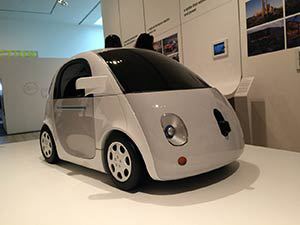Design encompasses a lot of different industries, and this is a challenge that the Design Museum in London has taken on. The Designs of the Year exhibition features the very best examples of design from all corners of the world, from devices which text you when a cow’s about to give birth to street-lights which play with your shadow. We’re not here to talk about those things though. We’re here to talk about cars.
So, what’s on show this year?
The exhibition is split into multiple categories, and the “Transport” category contained some great cars, as well as other innovative designs and technologies. These included Dianese’s wearable airbag for motorcyclists and Loopwheels – a new type of bicycle wheel which includes the suspension inside the wheel itself, removing the need for bulky suspension forks.
A city car made by an F1 designer

The MOTIV.e is a collaboration by Yamaha Motor Company and Gordon Murray design to “deliver a new level of personal mobility”.
The car utilizes Gordon Murray Design’s iStream manufacturing system to create a lightweight yet safe vehicle, developed around the idea of a simplified process which only requires an assembly plant 20% the size of a conventional facility.
Unfortunately, the car itself wasn’t on the show floor, so didn’t garner as much attention as the other automotive designs, but if you had to choose between the MOTIV.e and a Smart, I think we all know what you’d pick!
Another accolade for the Model S

We all know the deal by now. After Consumer Reports.. Uhh.. Reported that the Model S was the best car it’s ever tested, anything else is just icing on the cake. Winner of Automobile and Motor Trend’s Car of the year awards in 2013, the American manufacturer is consistently updating and improving its flagship model.
Again, the Model S isn’t on show at the exhibition, and I’m not really sure it should be there at all – given that the car has been around for over a year now! It’s still another accomplishment for Elon Musk’s young company, and especially Tesla’s hard-working design team.
Cute as a button, made by Google

Google have been working on their driverless car technology for a long time now. They have hundreds of thousands of miles worth of real-road experience, navigating amongst the traffic and pedestrians of California, and even taking on the hairpin turns of San Francisco’s Lombard Street.
In 2014, the company revealed a video of a fully-autonomous vehicle with no pedals or steering wheel. In the past, driverless cars have always been prevented as normal cars (with all the usual controls) which have an autonomous mode – but you can switch back to manual control at any point. Not this time. The other major talking point is the look of the vehicle. It’s just. So. Cute.
The front of the car, which features a little button nose (that houses a camera array) with a hint of a smile and wide-spaced eyes/lights, evoke the same kind of feeling as seeing a puppy. Just with less fur.
According to a piece by The Oatmeal writer Matthew Inman (who was invited to take a ride in Google’s adorable little fella), this was intentional.
“By turning self-driving cars into an adorable Skynet Marshmallow Bumper Bots, Google hopes to spiritually disarm other drivers.” he writes in his post about the car. Read it here – it’s a good one!
BMW’s vision of the future
There was one very big impression made in the centre of the show floor at the Design Museum, and that was by the BMW i8 (see our full run-down of the i8 here). This was the only car which had a physical presence (other than the miniature model of the Google car, but that doesn’t really count unless you’re a Barbie or something) and it made its presence felt greatly.
The angular, futuristic machine is in many ways at odds with the understated design principles of the Tesla Model S. Whilst the American car has been made to be an every-day machine with forward-looking technology inside, the i8 has been designed to be a flagship showpiece of how to design beautiful cars whilst bringing forward the future that 10-year-old boys dream about.

This thing wouldn’t look out of place in Minority Report or I, Robot, and I think that’s the point.
The most interesting thing about the i8 is that it still works. There are angles everywhere, and lots of LED lighting to make sure everyone knows it’s THE FUTURE – but it is still absolutely a BMW machine, with a slimmer version of the recognisable kidney-grille and subtle nods to previous cars from the manufacturer.
The hybrid drivetrain is, from all reports I’ve read, a joy to drive – however this again is at odds with cars such as the Model S due to the fact there’s still a petrol engine in there.
It’s perhaps the only element of the car which doesn’t take a deep-dive into science fiction, but this isn’t to be seen as a bad thing. With full-electric cars, range anxiety is a big deal. The addition of a petrol engine to take over once you’re out of electric range is important for many motorists, and shows that BMW wanted to make a car that looks to the future, but keeps us rooted firmly in the present. And isn’t that what makes great design? I think so.
The Designs of the Year exhibition runs from the 25th March to the 23rd August 2015 at the Design Museum, in Shad Thames in London. Book your tickets in advance (£13 for an adult) at the Design Museum website.
As much as we love looking to the future, we have some amazing, forward-thinking cars available for finance right now. To try and find your perfect vehicle, take a look at our car search!
What cars do you think should have been in the Designs of the Year Exhibition? Do you disagree with any of these? Let us know in the comments, or head over to our Facebook page to share your thoughts!





 Facebook
Facebook Twitter
Twitter Instagram
Instagram LinkedIn
LinkedIn Youtube
Youtube